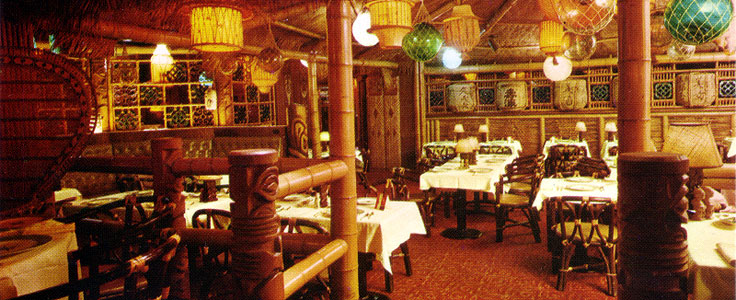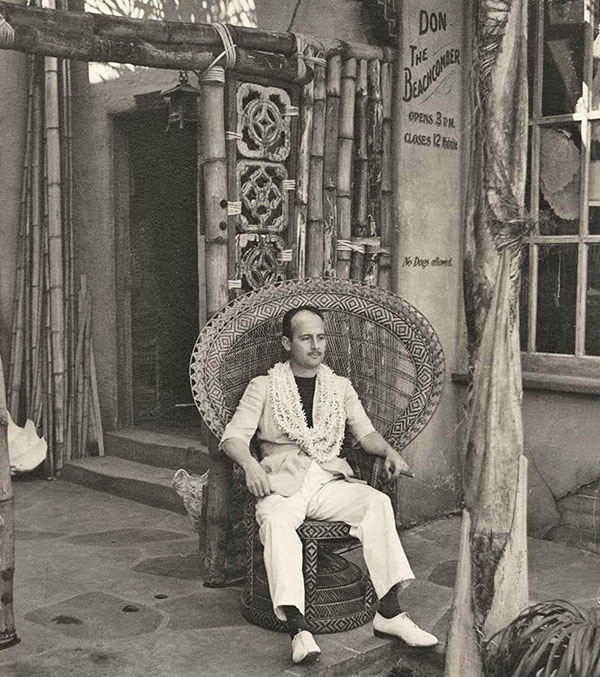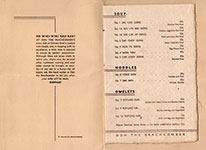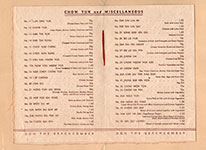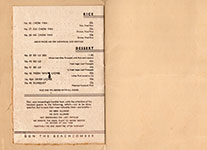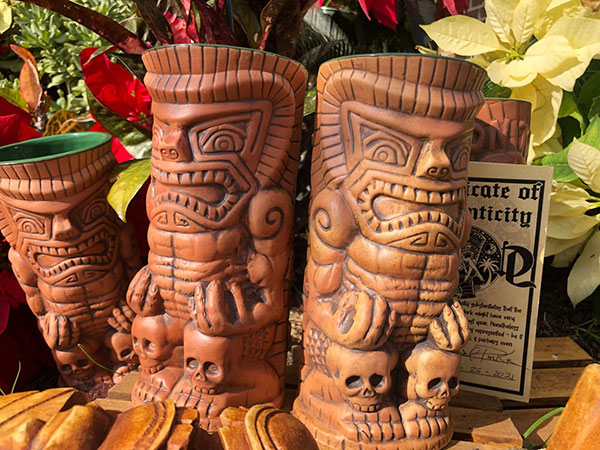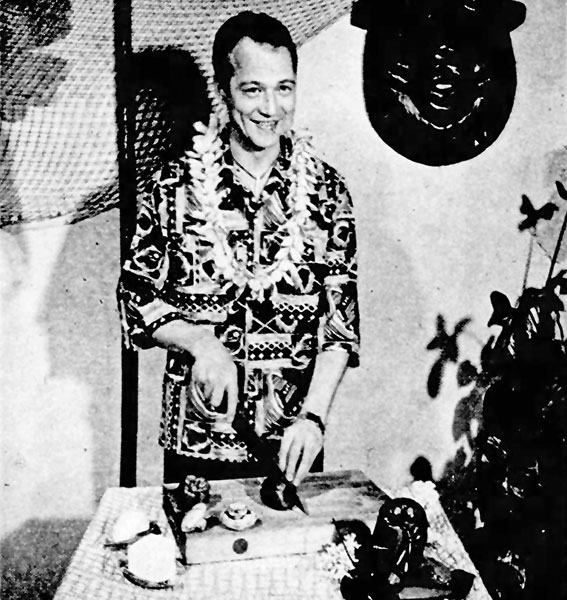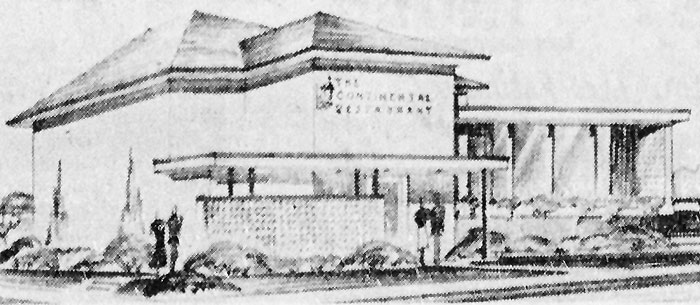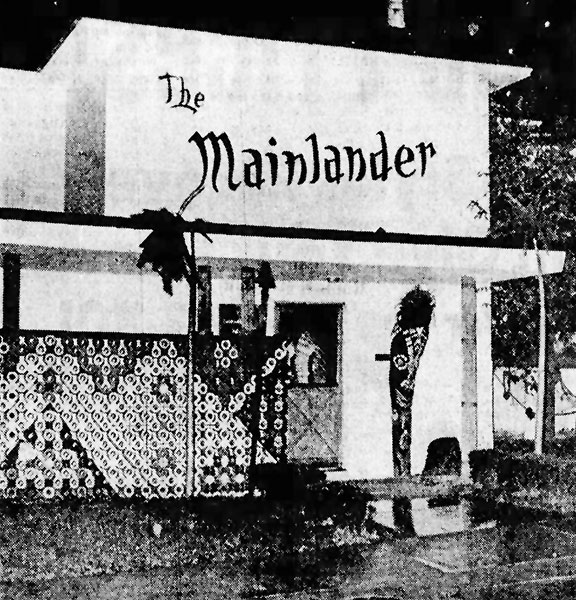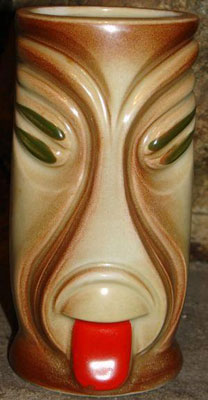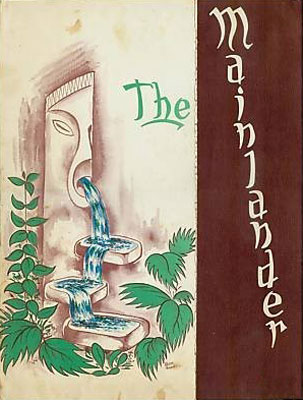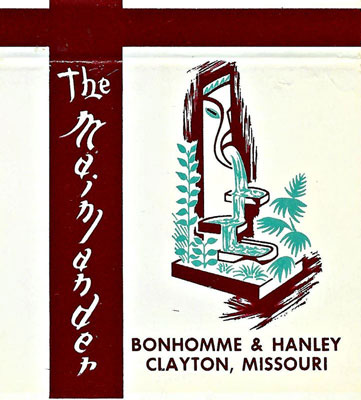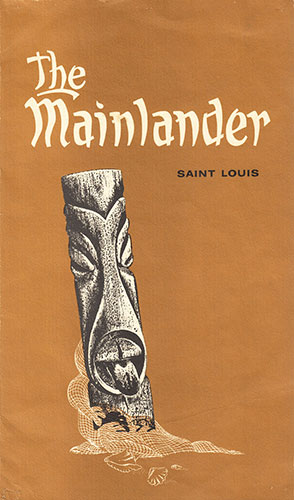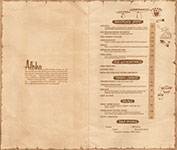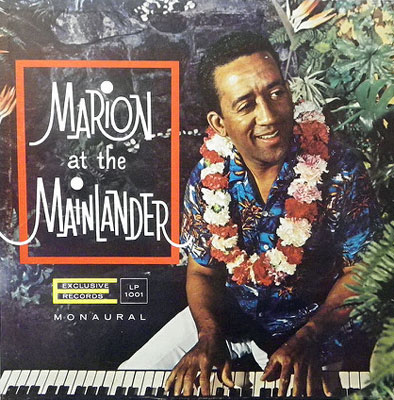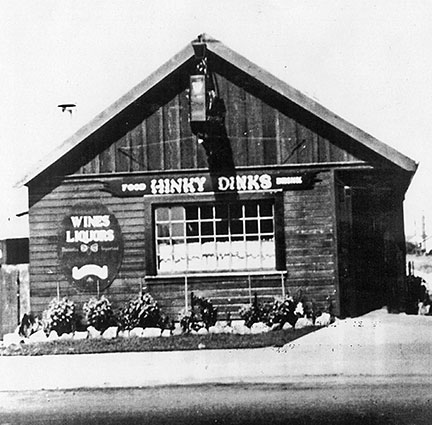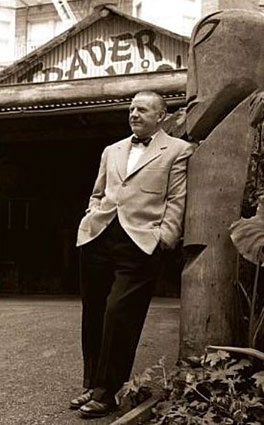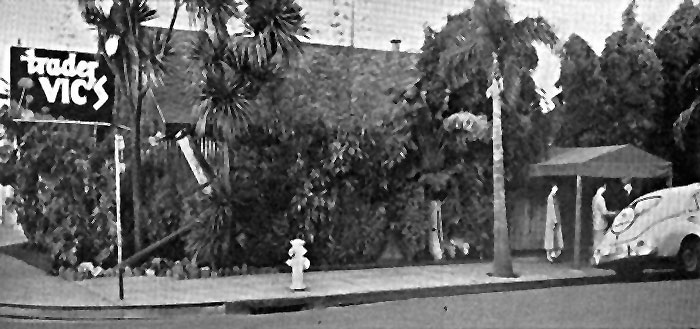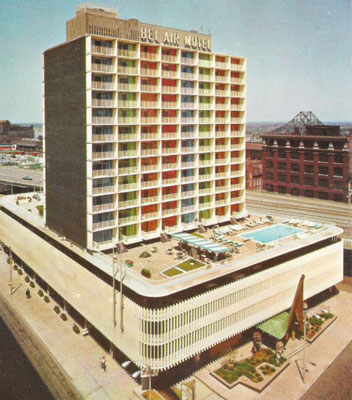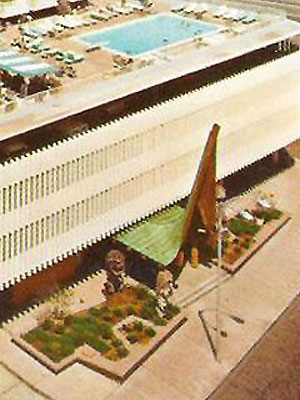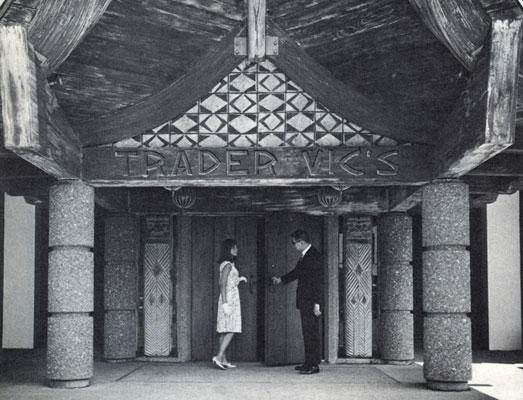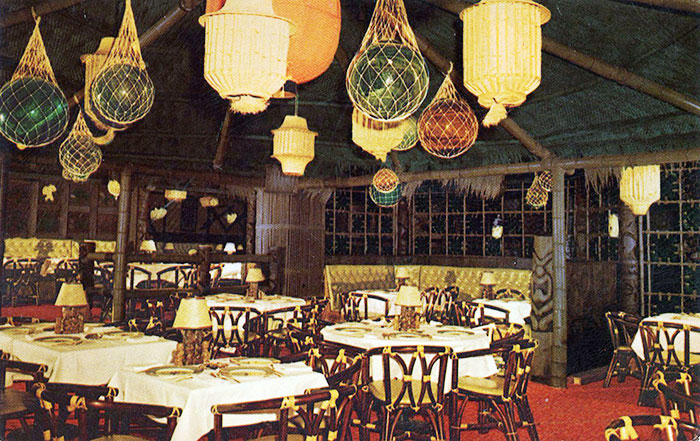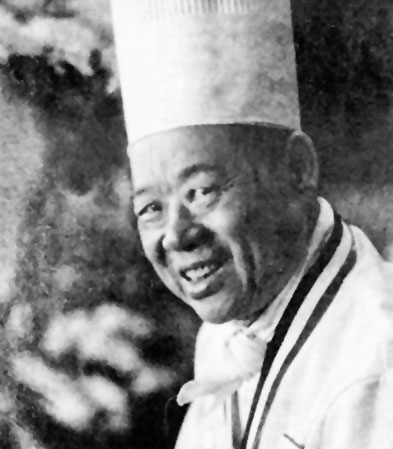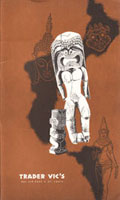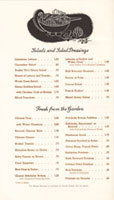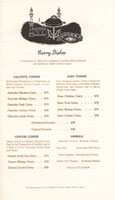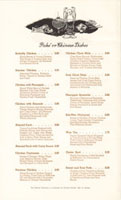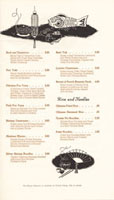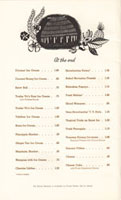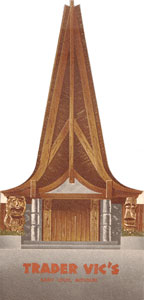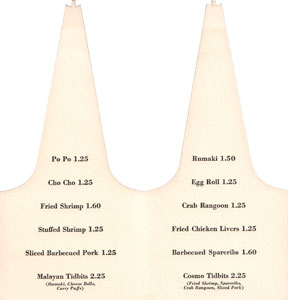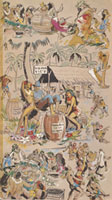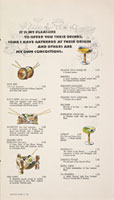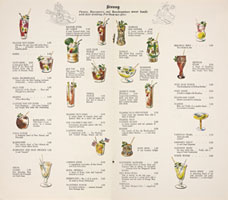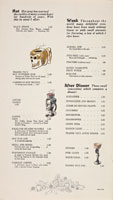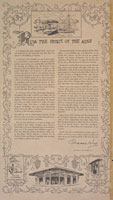|
Tiki Bars Tiki culture in the United States began with the opening of Don the Beachcomber, a Polynesian themed bar and restaurant in Hollywood, California. Ernest Raymond Gantt was born in Texas in 1907. After traveling in the South Pacific and the Caribbean, Gannt landed in Hollywood and worked as an illegal bootlegger, making moonshine during Prohibition for a number of years.
When Prohibition ended in 1933, Gantt opened a
bar called Don's Beachcomber in Hollywood, where he created
innovative rum drinks. With its success, he began calling himself
Don the Beachcomber and legally changed his name to Donn Beach. In
1937, the bar moved across the street, expanded into a restaurant
and its name changed to Don the Beachcomber.
The new restaurant had a flashy Polynesian
decor, including a bamboo bar with matching barstools, flaming
torches, fishing nets draped on the walls, large glass fishing
weights in every shade of blue and green, and flower leis. Customers
ate what seemed like wonderfully exotic cuisine which was, in
actuality. mostly standard Cantonese dishes served with flair. By the middle of the 20th century, most cities in the United States had at least one tiki bar. Many were deluxe restaurants Ė an upscale evening out, worthy of dressing up. The food and drink presentations were elaborate. While the food often looked better than it tasted, it was revolutionary in a time when people didn't commonly eat outside their own culture.
A hallmark of the tiki bar was the specialty drink,
many of them rum-based, such as the Mai Tai and Zombie. Most bars
offered their signature drinks in decorated ceramic tiki mugs.
Cocktails were often garnished with paper cocktail umbrellas, live
flowers or plastic animals.
The Mainlander Dale Warren McGowan was born on November 26, 1926 in Racine, Wisconsin. By 1940, he had moved to St. Louis with his parents and older sister. On January 20, 1951, McGowan married Helen Marie Bruns of St. Louis in Santa Barbara, California. At the time, he was in the service and stationed at Camp Cooke, a training installation for units slated for combat in Korea.
On July 30, 1952, Sergeant Dale McGowan arrived
in San Francisco aboard the transport General Edgar T. Collins, a
combat veteran of the Korean War. According to his secretary and
friend for over 50 years, "He became enchanted with Hawaii during
his Korea R & R and dreamt constantly of returning there." McGowan
channeled his enchantment with Hawaii into a Polynesian themed
restaurant back in St. Louis.
Crispus Attucks Elementary was a single-room school operating from 1894 to 1954 at the intersection of Bonhomme and Hanley roads in Clayton. It was built in response to the segregation of Clayton schools, and in comparison to the education that was afforded black people in the city at the time, the Attucks school was considered to be a good school.
In June of 1961, the little brick schoolhouse
was extensively remodeled and opened as the Continental Restaurant.
The restaurant was operated on two levels, with a dining area above
and a cocktail lounge below. It specialized in European cuisine.
The Continental Restaurant was short lived. On
December 28, 1961, the owner filed for bankruptcy. On July 3,
1962, Dale McGowan reopened the space as The Mainlander.
Ten-foot totem poles and white sand beach
adorned The Mainlander's entrance. The dining room featured bamboo
covered walls, grass shacks and a tiki fountain. Blown glass fish
floats wrapped in rope netting hung from the ceiling. The tiki fountain, designed by William Westenhaver,
appeared on the restaurant's advertising, menus and in the form of souvenir mugs.
Sarong-clad waitresses graced the dining room. Conrad Castillo, the headwaiter who was born in the Philippines, always had interesting stories to relate.
The Mainlander's lengthy menu
included fresh seafood, chicken, steaks and an array of Polynesian dishes. Lobster
Tahiti was a specialty served in a huge clam shell. And, of course,
The Mainlander offered a variety of exotic "South Sea potions."
In its lower level, a waterfall of lava rock decorated
The Mainlander's Huki Lau bar
and lounge. Native St. Louisan and well respected pianist Marion
Miller played there for many years and recorded a best-selling
album.
On November 18, 1971, a shooting took place in The Mainlander's lower level bar, with two customers killed and a waiter injured. Shortly thereafter, Dale McGowan sold his restaurant to John Bristow. McGowan realized his dream of returning to Hawaii, where he became a successful real estate developer. Bristow operated The Mainlander until early 1977, when the restaurant closed its doors. Trader Vic's
At the age of 34, Victor Bergeron borrowed $800
from his aunt, persuaded a carpenter to build a shack in Oakland,
California for
$500 and spent the rest on supplies for a restaurant he named Hinky
Dinks. Within two years Bergeronís talent for mixing potent but
unusual drinks and cooking
slightly exotic food, enabled him to expand his restaurant.
Business boomed, and Bergeron proceeded to open his Trader Vic's restaurants all over the country and throughout the world.
In December of 1963, Norman Probstein opened
the 17-story Bel Air East Motel at Fourth and Washington in Downtown
St. Louis. Probstein had opened the Bel Air West on Lindell in the
Central West End six years earlier. The new downtown motel would
include two street level restaurants Ė a Miss Hulling's and a Trader
Vic's.
A St. Louis Symphony Society benefit party marked the opening of Trader Vicís new restaurant on December 5, 1963. The restaurant was open to the public the following evening. Three large wooden tikis which had been carved in New Guinea and Java flanked the restaurant's high pointed-roofed entrance. They combined to give the otherwise gleaming white motel an exotic air. There was a tropical ambiance inside, including wicker furniture, tables of monkey-pod wood and a Fiji Island totem pole. Background music was from a genre called exotica, courtesy of such artists as Martin Denny and Arthur Lyman.
There were four dining rooms. In one room, two white ovens Ė each shaped like a huge barrel Ė stood on a
platform. The ovens were Bergeronís own invention and were used in
all his restaurants. Such dishes as Indonesian lamb roast and
Chinese barbecued chicken were cooked in them.
Trader Vic's restaurants were better known for their exotic food and drink than their haute cuisine. But the Trader Vic's in the Bel Air East was different, and the difference maker was their executive chef, DuBois Chen.
Chen Tsai Ching was born in a village outside
of Shanghai, China in 1918 and worked in several Shanghai
restaurants as a young man. He left China in 1941 and emigrated to
what was then French Indo-China, joining the French navy as a cook.
He changed his name to DuBois to make it easier for the French to
address him. After 10 years of French cuisine, Chen switched to
Chinese cuisine, finding work on a Chinese passenger ship. His next
position was as executive chef of Jimmy's Kitchen Restaurant in Hong
Kong. From there, Chen came to the United States, where he found
his way to St. Louis as the executive chef at Trader Vicís when its
doors opened in 1963.
Trader Vic's lengthy menu had
imaginative Chinese cuisine, but also
displayed a wide variety of Indian curries, entrees with a
French influence and a number of basic American dishes. Most of the appetizers were Asian and they were
among the highlights of a visit to Trader Vic's.
Trader Vic's franchise was built on its
cocktails. In 1944, after success with
several exotic drinks, a bit of serendipity occurred that would earn
Victor Bergeron a place in history. That day in Oakland, he pulled
down a bottle of 17-year-old Jamaican rum, added a squeeze of lime,
a dash of rock candy syrup, a splash of orange CuraÁao, and some
French orgeat, and poured the concoction over cracked ice. He handed
it to a friend visiting from Tahiti who immediately exclaimed, "Itís
mai tai roa ae!" (Tahitian for "out of this world, the best.") The
first Mai Tai was born. The tiki craze came to its climax in the mid-1960s, and by the end of the Vietnam War, came crashing to an end. What was once considered stylish and trendy was now considered tacky and passť by a younger crowd that rejected the values and tastes of their parentsí generation. Tiki bars began to close in droves. After a 23-year run in St. Louis, the doors of Trader Vicís were permanently shuttered on August 31, 1985. However, the Mai Tai is still served at 19 Trader Vic's restaurants throughout the world.
Copyright © 2023 LostTables.com |
||||||||||||||||||||||||||||||||||||||||||||||||||


